From classical to modern painting
The intention here is to make a parallel between the changes that occurred to the equivalent of painting to literature and understand "visually" what Joyce did.
I found the following considerations made by Antonio Andrade, who attends or attended, a degree in Communication Design at the Faculty of Fine Arts, University of Porto:
Let us see first what transformation was at stake, with an example of the Romantic school of painting and another example from the school of Realism: Eugene Delacroix and Gustave Courbet

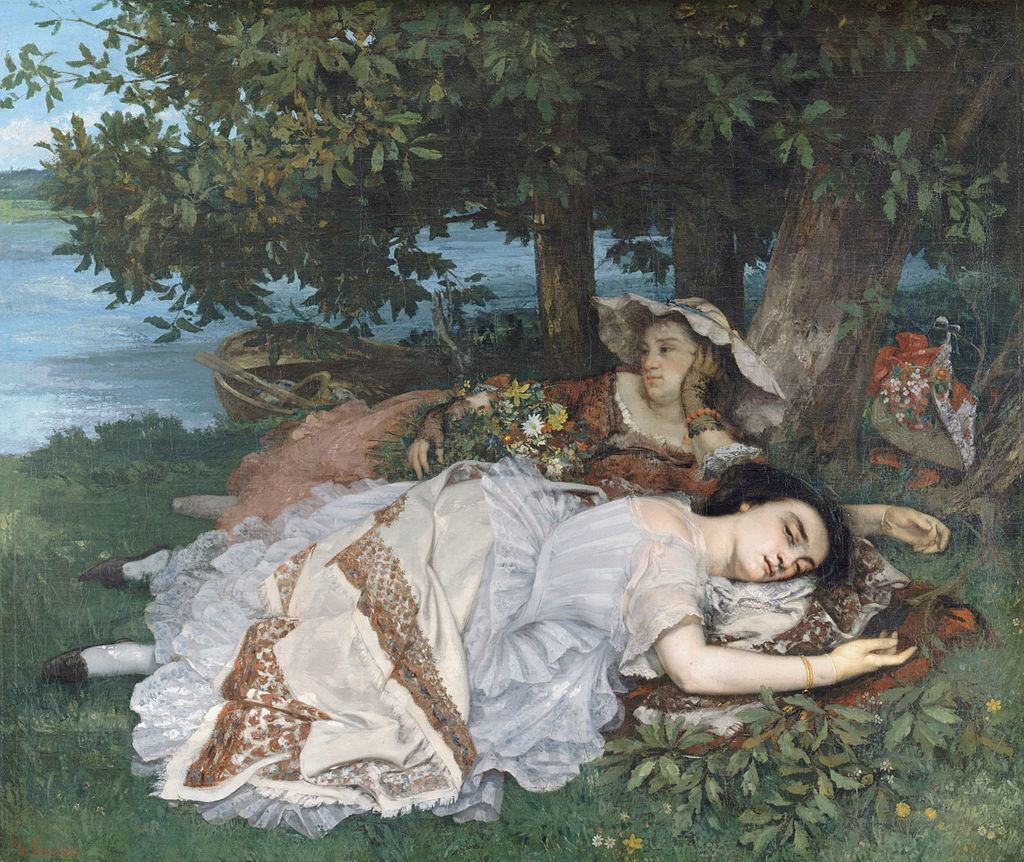 Les
Demoiselles Au Bord De La Seine (young Women By The Seine)
Les
Demoiselles Au Bord De La Seine (young Women By The Seine)
"In literature, for example,
Dostoyevsky is
one of the first to address the difficulty in conceiving the world otherwise
than by Euclidian
geometry in his novel, The
Brothers Karamazov. Another very significant novel is HG
Wells's Time Machine, which appears in 1895, and anticipates what Einstein
will propose ten years later on space-time quadri-dimensionality.
In painting the reaction to these new approaches to nature made notice quickly.
Photography"froze"
the time and in
the Middle Ages artists did not dominate perspective, the artists of
the second half of the nineteenth century refused it subverting its rules and
creating spatial distortions.
The movement which most based on the new spatial perceptions was Impressionism.
The Impressionists did not follow the prejudices of Realism
or the Academy and sought above all to give life to their works. It is precisely
because of this desire to break it ukp that we can not include Manet in Impressionism
because his works are inspired in tradition. However his work was central to
the Impressionist painting and was around it that it has developed this style.
The light and the movement then become the main element of the painting.
Now trying to find concrete examples of these new theories in the work of (Edouard)
Manet, Let us look on his painting Le
dejeuner sur l'herbe (see below). In this context the first perspective
shock arises, you do not need a lot of time observing it to stumble in one object,
that seen thus is in complete disproportion with the rest of the set. It is
a woman bathing in the background of the composition and she is represented
too big, also causing some discomfort at the level of lighting.
To the analysis made in pictorial terms it is necessary to add the following context analysis, context: (see before Perception of Reality)
The Brothers Karamazov
The phrase associated with this Dostoyevsky's book is: If there is no God, everything is permitted?
It is actually a paraphrased form of an excerpt from the book which narrates about an article the character Ivan Karamazov just published in a magazine:
... he (Ivan Karamazov Fiodorovitch) declared solemnly that across the earth there is absolutely nothing that compels men to love their fellow men, that this law of nature, which states that the man loves humanity, absolutely does not exists and to this day if there was any love on earth, this was not due to natural law but only to the fact that men believed in their own immortality. Ivan Fiodorovitch added, in parenthesis, that this is what all natural law is all about, so that, by destroying men's faith in his immortality, immediately it will be exhausted not only love but also any strength to continue life in the world. On top of that, there will be nothing amoral, everything is permitted, even cannibalism. But this is still little, he concluded by saying that for each particular individual, for example, like us here, which do not believe in God or in his own immortality, the moral law of nature must be immediately converted to the total opposite of the previous religious law, and selfishness, even to the point of crime, should not be allowed to man but even recognized as the indispensable outcome, the most rational and almost the most noble possibility to the situation. - Page 109, from the publisher 34.
In a famous passage, in which Ivan tells his brother Aliéksiei a poetry he is writing, entitled The Great Inquisitor, this inquisitor, when faced with Jesus who just got back to Earth, questions:
Did not you think that he (Man) would end up questioning and denying even your image and your truth if oppressed with such a terrible burden as free will? - Page 353 of the publisher 34.
Much later on in the book, Ivan considers the other possibility. If God does not exist, and religion were abolished all forms, what would happen?
When mankind, without exception, has denied God (and I believe that this will happen), then man will fall by itself, without anthropomorphism all the old conception of the world and especially all the old moral, and it will be the start of a completely new era. Men will join to make life everything it can be, but with the sole purpose of happiness and joy in this world. Man will reach greatness pervaded with the spirit of a divine and titanic pride, and it will be the appearance of the man-god. Winning, every hour, with his will and science, a nature already without limitation, man will feel well and at every hour of such a high enjoyment, man will replace with it the old hopes in a heavenly joy. Each and every one will know he or she is fully mortal, has no resurrection, and accepts death with aplomb and tranquility, like a god. In his haughtiness men will understand that there is no reason to complain that life is a moment, and will love his brother man without expecting any reward. Love will satisfy only a moment of life, but the simple awareness of transience will strength the flame of love as much as it dissipated before in the hope for a love beyond the grave and the infinite. - Page 840 of the publisher 34
This discussion is the basis of Joyce's proposal.
The Time Machine H G Wells
The character known only as "The Time Traveler", develops, based on mathematical concepts, a machine capable of moving through the fourth dimension, which in this case is considered the dimension of time. With it, travels to the year 802 701 where are the Elois, peaceful and docile remaining humans, apparently living in a paradise world, without any worries, til to realize that they actually serve as food to another race, the Morlocks that live underground and, despite having been previously dominated by elois became their predators.
The author rejected Jesus for a long time and then studying the four Evangelists eventually accepting its existence, which he denied previously.
Le dejeuner sur l'herbe
"The Luncheon on the Grass is the greatest work of Édouard Manet, one in which he realizes the dream of all painters: to place figures of natural grandeur in a landscape. We know the power with which he vanquished this difficulty. There are some leaves, some tree trunks, and, in the background, a river in which a chemise-wearing woman bathes; in the foreground, two young men are seated across from a second woman who has just exited the water and who dries her naked skin in the open air. This nude woman has scandalized the public, who see only her in the canvas. My God! What indecency: a woman without the slightest covering between two clothed men! That has never been seen. And this belief is a gross error, for in the Louvre there are more than fifty paintings in which are found mixes of persons clothed and nude. But no one goes to the Louvre to be scandalized. The crowd has kept itself moreover from judging The Luncheon on the Grass like a veritable work of art should be judged; they see in it only some people who are having a picnic, finishing bathing, and they believed that the artist had placed an obscene intent in the disposition of the subject, while the artist had simply sought to obtain vibrant oppositions and a straightforward audience. Painters, especially Édouard Manet, who is an analytic painter, do not have this preoccupation with the subject which torments the crowd above all; the subject, for them, is merely a pretext to paint, while for the crowd, the subject alone exists. Thus, assuredly, the nude woman of The Luncheon on the Grass is only there to furnish the artist the occasion to paint a bit of flesh. That which must be seen in the painting is not a luncheon on the grass; it is the entire landscape, with its vigors and its finesses, with its foregrounds so large, so solid, and its backgrounds of a light delicateness; it is this firm modeled flesh under great spots of light, these tissues supple and strong, and particularly this delicious silhouette of a woman wearing a chemise who makes, in the background, an adorable dapple of white in the milieu of green leaves. It is, in short, this vast ensemble, full of atmosphere, this corner of nature rendered with a simplicity so just, all of this admirable page in which an artist has placed all the particular and rare elements which are in him"
- Emile Zola, Edouard Manet, 1867 and 91
Manet goes further with the abolition
of Euclidean space in his Musique
aux Tuileries, which presents a scene unfocused in which the observer
has some difficulty navigating due to lack of references. This effect is further
intensified by the lack of squareness as Manet took care of bending all the
trees and tilting all the hats in men's heads.
Another in-depth study by Claude
Monet, not to be confused with Manet, from 1890 was the time in painting.
Concerned to represent the same composition at different points in time. The
works that best symbolize this aspect is undoubtedly the Meules
of Foin. For the development of these themes he took time intervals
which could range from just a few hours to several months. We have here quite
evident the emergence of quadridimensionality painting, and that was the goal
of Manet: create a relationship so strong in painting between the object and
the time, such as the one which previously existed with the dimensions. It is
also important to note that both Manet and Monet never theorized any of their
searches, they just made evident and inevitable in their painting, and this
is the great difference in method between science and art, being that in most
cases the demand is the same.
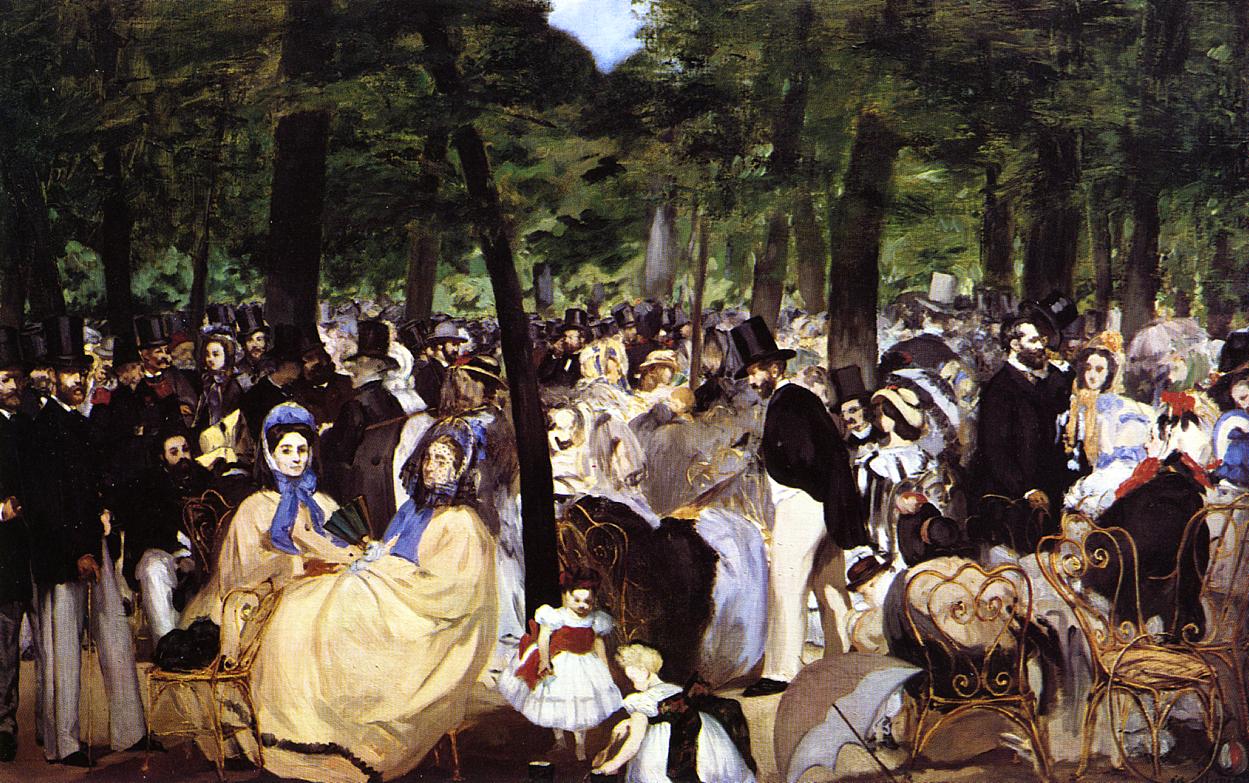
Musique aux Tuileries
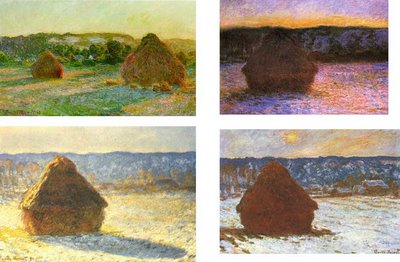
Haystacks is a title of a series of impressionist paintings by Claude Monet. The primary subjects of all of the paintings in the series are stacks of hay in the field after the harvest season. The title refers primarily to a twenty-five canvas series (Wildenstein Index Number 1266-1290) begun in the end of summer of 1890 and continued through the following spring, using that year's harvest. Some use a broader definition of the title to refer to other paintings by Monet with this same theme. The series is known for its thematic use of repetition to show differences in perception of light across various times of day, seasons, and types of weather. The subjects were painted in fields near Monet's home in Giverny, France.
The special feature of this series is to repeat the same pattern to show the different effects of light and atmosphere over days, seasons, and weather conditions, but also to vary the frames and perspectives . Fifteen of these twenty-five paintings were first presented to the public at an exhibition and sale organized by the Paris gallery of Paul Durand-Ruel, from 5 to 20 May 1891, which can consider this set as the first series actually designed and thought as such by Claude Monet.
Paul Cézanne é outro pintor a quem devemos uma abertura na forma de ver o espaço pois foi o primeiro a demonstrar que os objetos de uma pintura integram o espaço de trabalho e são afetados pelo mesmo. Até então nunca tinha havido uma preocupação em conjugar objeto e espaço, não havendo implicação deste no movimento dos objetos. Assim como para Newton o espaço e o tempo eram coisas distintas, para os artistas o espaço nunca interagira com a matéria nele colocado. Não será de esquecer também o nome de Van Gogh que colaborou com o impressionismo.
Paul Cézanne is another painter to whom we owe an opening in the way of seeing space because he was the first to demonstrate that objects of a painting integrates the workspace and are affected by it. Until then there has never never been a concern to combine object and space, with no implication of this to the motion of objects. As for Newton space and time were different things, for artists space never interact with matter it placed. There will also forget the name Van Gogh who collaborated with Impressionism.
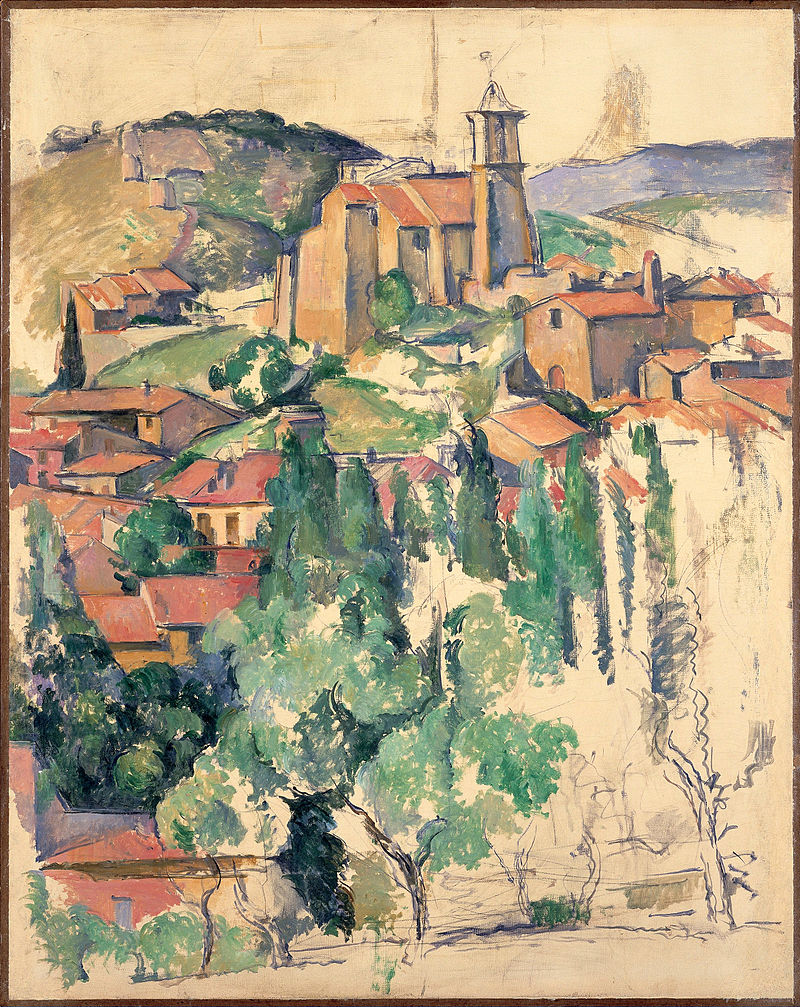
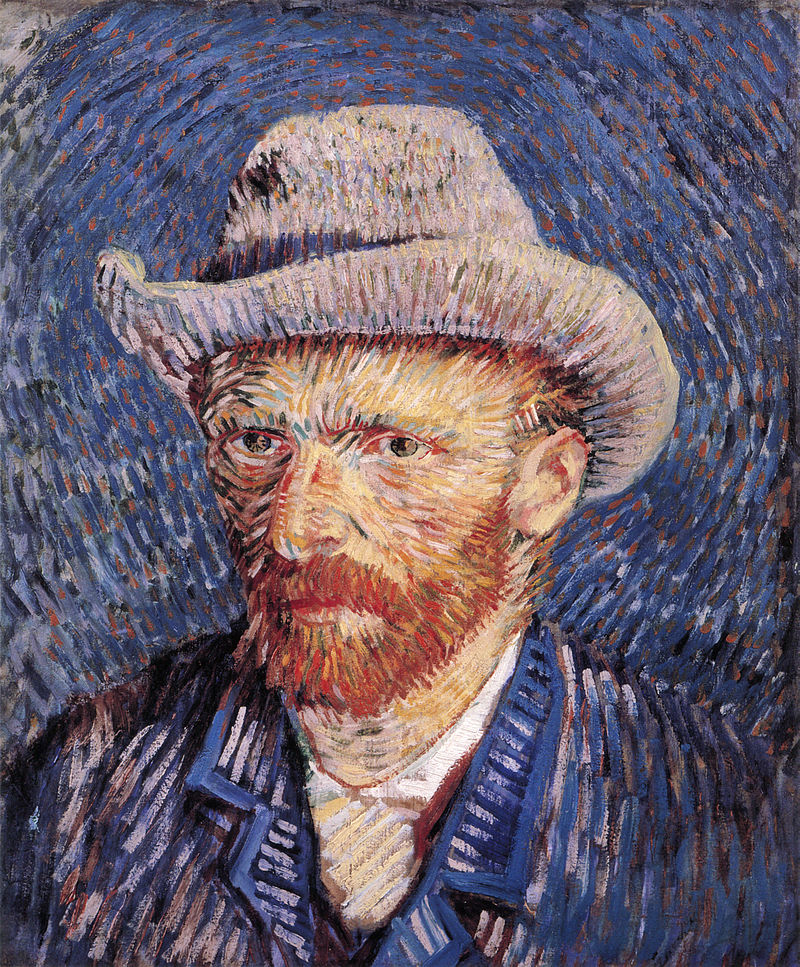
This was the beginning of the revolution brought about by the emergence of non-Euclidean geometries. Again, these artists painted in their screens theories that Einstein would bring about decades later. All these ideas were taken to most extreme points in the twentieth century with the Cubism of Pablo Picasso.
Cubism can be compared to the revolutionary
invention of perspective in the Renaissance and Monet introduced a temporal
representation in painting, relying on various frames as space temporality statements
, Picasso introduces simultaneity. The Cubist painting cracked up the apprehension
of reality while simultaneously presenting parts of an object that could not
be seen at once - the perception is no longer able to summarize the mere sum
of parts by the inability to get toghether the fragments.
To subvert the mechanical paradigm, which saw the world as a classic sequence
of rules and was so dominant, Picasso sought inspiration in African motifs for
primitive view of space and time which is quite different from the standard
Euclidean way
This can be seen in one of the most famous paintings and more representative
of the beginning of Cubism Les
Demoiselles d'Avignon in which the woman is shown crouching at the same
time profile and front.
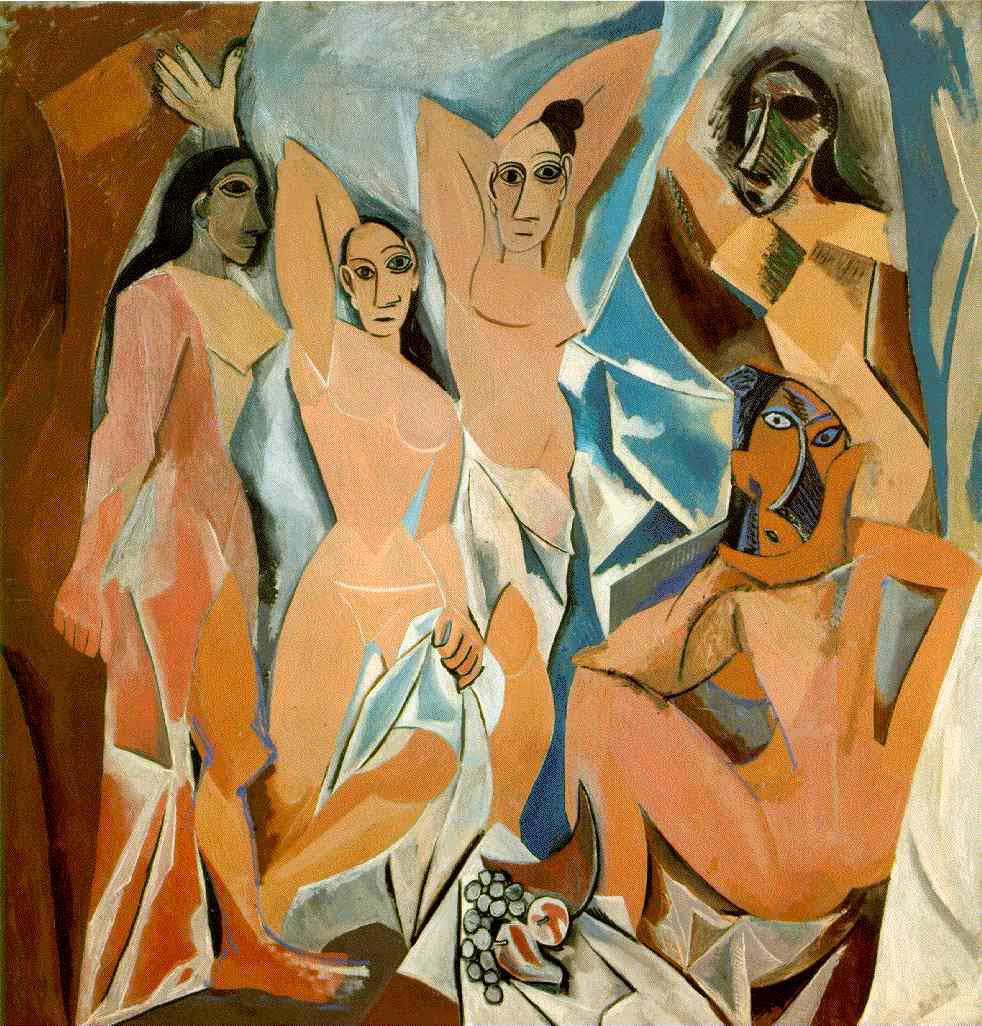
Les Demoiselles d'Avignon
In general terms, the major change
brought about by Picasso was undoubtedly the link (or re-connection) between
science, math, technology and art.
Thus, the notion of a closed form designed in a static and monocular space,
commonly inherited from the Renaissance, is now replaced by the rhythm of image,
multi-focusing and the multisensoriality.
Victor Vasarely, born on April
9, 1906, takes the idea of quadri-dimensionality further to state that for him
the time is not the fourth but the first dimension because the space is the
place of a phenomenon that takes place over time. Without skipping this discussion,
it is remarkable the fact that nowadays physicists also prefer to set the standard
meter unit of length over a period of time: the space will be measured according
to the constancy of the speed of light. Matter provides the atomic clock, with
its strict periods of disintegration.
Considering the chromatic evolution since Impressionism, the use of bright colors
are used to produce light effects. This new method, together with others already
mentioned, makes the space a Brilliance-chromatic energy field.
Another important aspect in non-Euclidean artists of the twentieth century is
its willingness to bring out the pictorial process, which includes the subject,
which turns out to be reflected in its aesthetic intention.
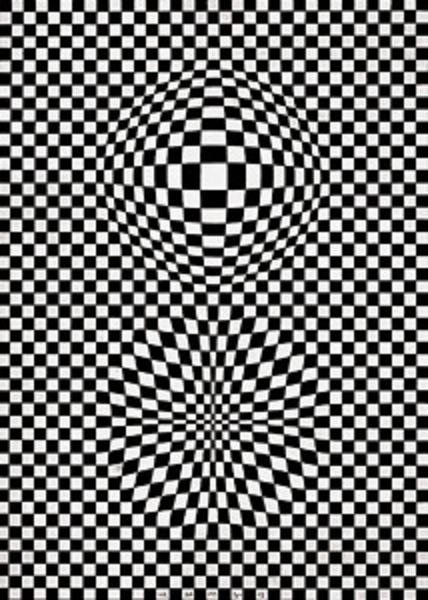
Victor Vasarely
The transformation in literature targeted by Joyce is equivalent to the transformation in the painting described above.
Return to The Books at the Wake